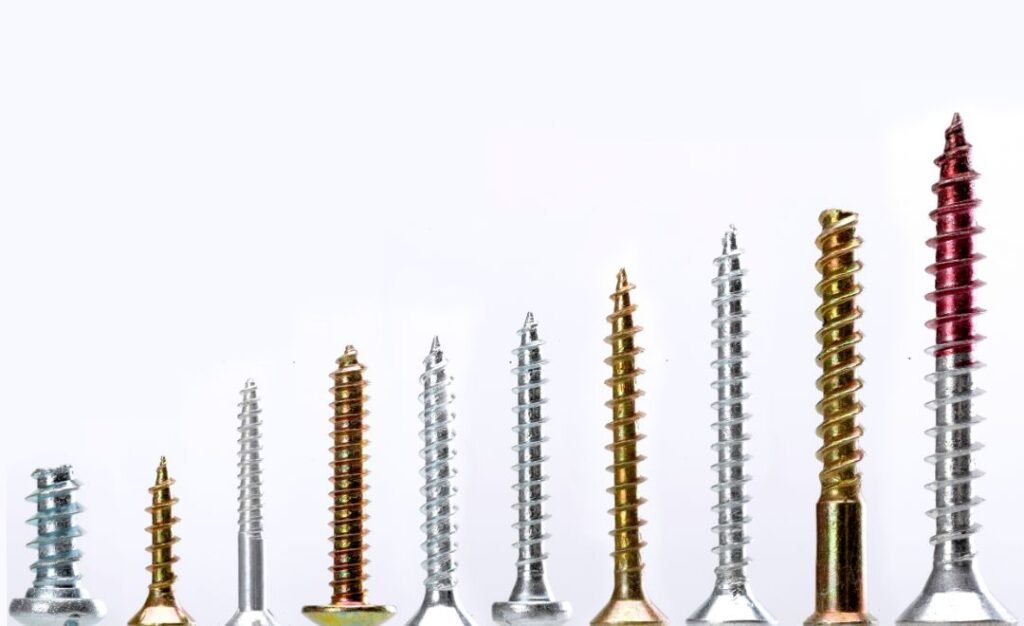Introduction to Screws
Welcome to the fascinating world of screws. Whether you’re fixing a loose chair leg or building a new bookshelf, screws are the unsung heroes of DIY projects. Understanding the different types of screws and their uses can make your tasks easier and more efficient. So, let’s dive into the top 10 screws every DIY enthusiast should be familiar with!
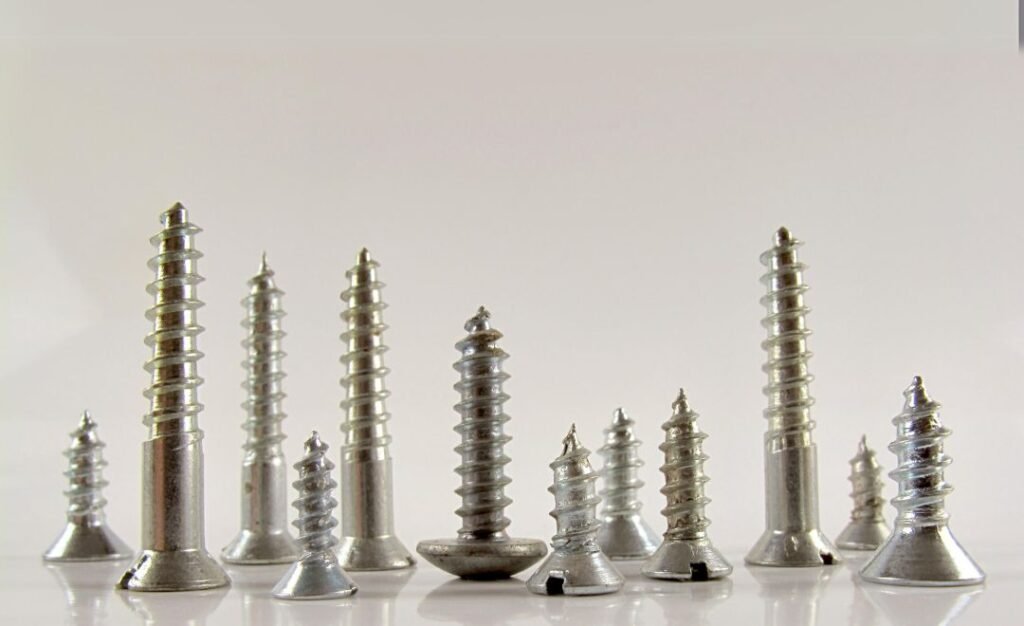
Why Screws Matter
Screws are not just metal sticks with threads. They are integral to countless home improvement projects. They hold materials together securely, can be adjusted or removed if needed, and are often more effective than nails or adhesives. Knowing the right type of screw for the job ensures a stronger, longer-lasting result.
Different Types of Screws
Before we get into the nitty-gritty, let’s quickly overview the main types of screws you’ll encounter:
- Wood Screws: Ideal for joining wood to wood.
- Sheet Metal Screws: Perfect for fastening metal sheets.
- Drywall Screws: Designed for use in drywall and plaster.
- Machine Screws: Used with nuts and often for precise applications.
- Self-Tapping Screws: Create their own hole as they go in.
- Deck Screws: Built to resist weathering for outdoor projects.
- Lag Screws: Heavy-duty screws for large, tough jobs.
- Concrete Screws: Made for anchoring into concrete.
- Robertson Screws: Known for their square drive and resistance to stripping.
- Upholstery Screws: Used for attaching fabric to wood.
The Essential Screws
1. Wood Screws
Characteristics of Wood Screws:
Wood screws are specially designed for fastening pieces of wood together. They typically have a flat head and a sharp point that allows them to penetrate wood easily. Their threads are deeper and spaced farther apart than other screws, providing a strong grip.
When to Use Wood Screws ?
Use wood screws for projects such as building furniture, repairing wooden fixtures, or attaching wooden parts. They are ideal for these tasks because they securely grip wood.
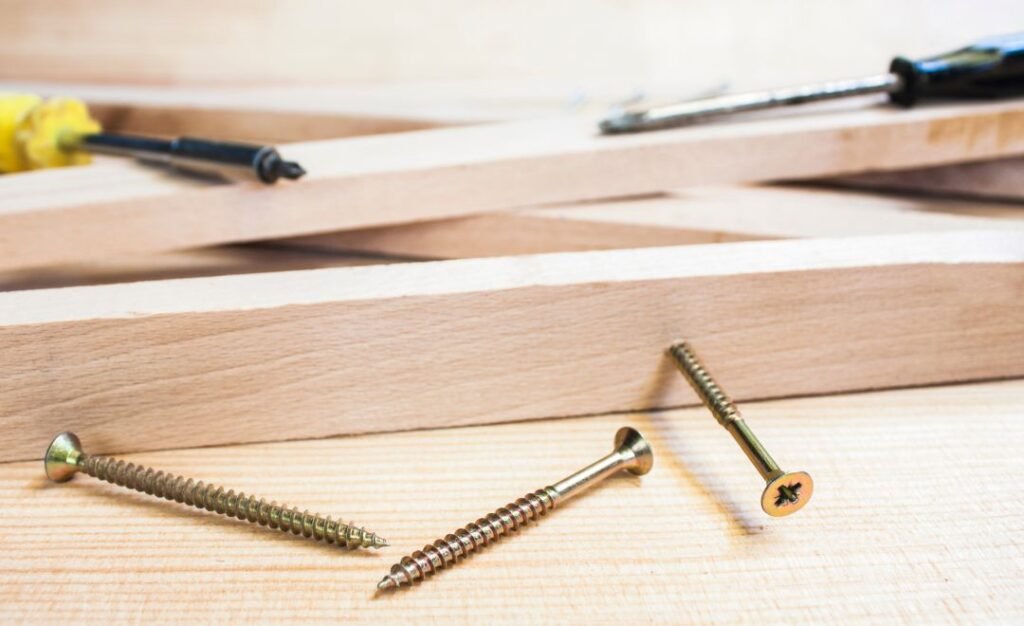
2. Sheet Metal Screws
Characteristics of Sheet Metal Screws:
Sheet metal screws have a sharp point designed to cut through metal, and they come in various head types. They are often used without the need for a pre-drilled hole.
When to Use Sheet Metal Screws ?
These screws are ideal for fastening metal sheets to metal frames or other surfaces. They are commonly used in HVAC installations, automotive repairs, and crafting.
3. Drywall Screws
Characteristics of Drywall Screws:
Drywall screws are designed for use with drywall. They feature a bugle-shaped head and a sharp point that allows them to penetrate drywall without cracking it.
When to Use Drywall Screws ?
These screws are ideal for hanging drywall panels and can be used for various drywall projects, including mounting fixtures and reinforcing drywall.
4. Machine Screws
Characteristics of Machine Screws:
Machine screws are consistent in diameter and are typically used with nuts or tapped holes. They come in various lengths and are used where precise fastening is required.
When to Use Machine Screws ?
Use machine screws for assembling machinery, electronics, or any project requiring a tight, precise fit. They are also common in computer and appliance assembly.
5. Self-Tapping Screws
Characteristics of Self-Tapping Screws:
Self-tapping screws feature a sharp tip that enables them to create their own threads in the material, eliminating the need for a pilot hole and accelerating the installation process.
When to Use Self-Tapping Screws ?
These are excellent for tasks where you’re working with materials like plastic or thin metals, where pre-drilling is inconvenient or unnecessary.
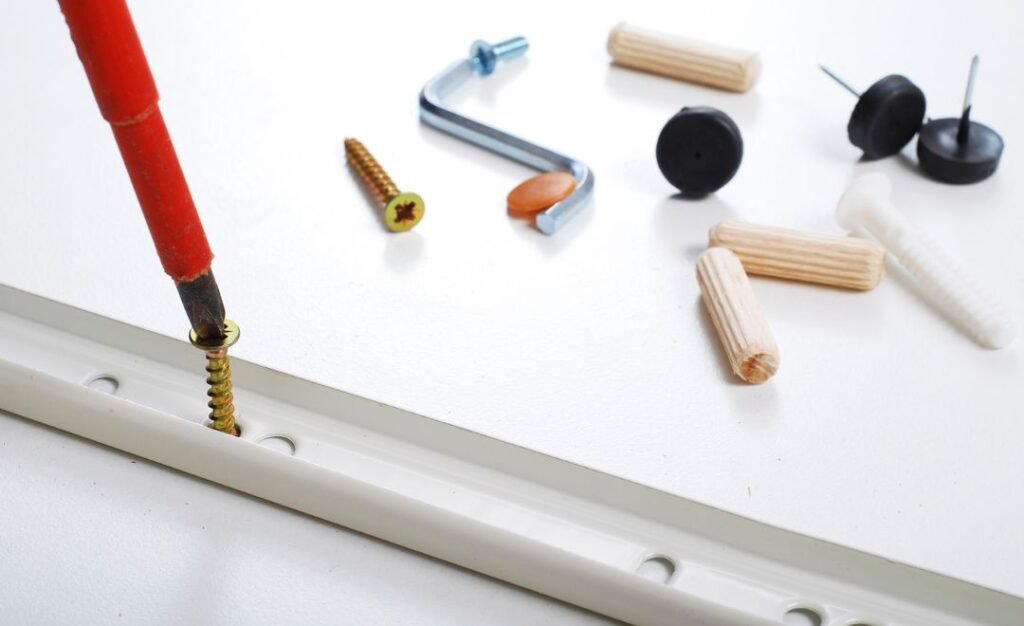
6. Deck Screws
Characteristics of Deck Screws:
Deck screws are specifically designed for outdoor use, featuring a rust and corrosion-resistant coating and threads engineered to grip wood and composite materials securely.
When to Use Deck Screws?
Use deck screws for building or repairing decks, fences, or any outdoor structure. They’re durable and perfect for withstanding the elements.
7. Lag Screws
Characteristics of Lag Screws:
Lag screws are large, heavy-duty screws with a hexagonal head. They are designed for demanding applications and have a coarse thread that provides strong gripping power.
When to Use Lag Screws ?
Lag screws are excellent for heavy-duty applications such as securing large wooden beams, heavy fixtures, or structural elements. They are commonly used in construction and woodworking.
8. Concrete Screws
Characteristics of Concrete Screws:
Concrete screws are designed to anchor into concrete, brick, or masonry. They have a special thread that grips the concrete securely.
When to Use Concrete Screws ?
These are essential for tasks such as attaching fixtures to concrete walls or installing concrete anchors; they’re perfect for any masonry project.
9. Robertson Screws
Characteristics of Robertson Screws:
Robertson screws have a square drive, which reduces the likelihood of slipping and stripping compared to other types. They are renowned for their superior grip and ease of use.
When to Use Robertson Screws ?
Use Robertson screws for projects requiring a secure, reliable fit with less risk of stripping, popular in woodworking and general construction.
10. Upholstery Screws
Characteristics of Upholstery Screws:
These are ideal for furniture projects, such as reupholstering chairs or sofas, as they offer both the necessary functionality for securing fabric and a polished appearance.
When to Use Upholstery Screws ?
Upholstery screws are used to attach fabric to wooden frames. They feature a decorative head and are designed to be both functional and aesthetically pleasing.

How to Choose the Right Screw for Your Project ?
Matching Screws with Materials
Selecting the right screw depends largely on the materials you’re working with. For wood, use wood screws; for metal, opt for sheet metal screws. For masonry, concrete screws are essential.
Considering Screw Length and Thickness
The length and thickness of a screw should be suitable for the materials you are joining. If a screw is too short, it won’t hold securely, while one that’s too long could split the material or cause other issues.
Tips for Using Screws Effectively
Pre-Drilling and Pilot Holes
For most screws, especially in harder materials, it is important to pre-drill a pilot hole to prevent splitting and make driving the screw easier. This small, additional step can save a lot of trouble.
Using the Right Tools
Using the correct tools, such as a power drill or screwdriver with the appropriate bit, can make a significant difference. It ensures that the screws go in smoothly and securely without causing any damage to the materials.
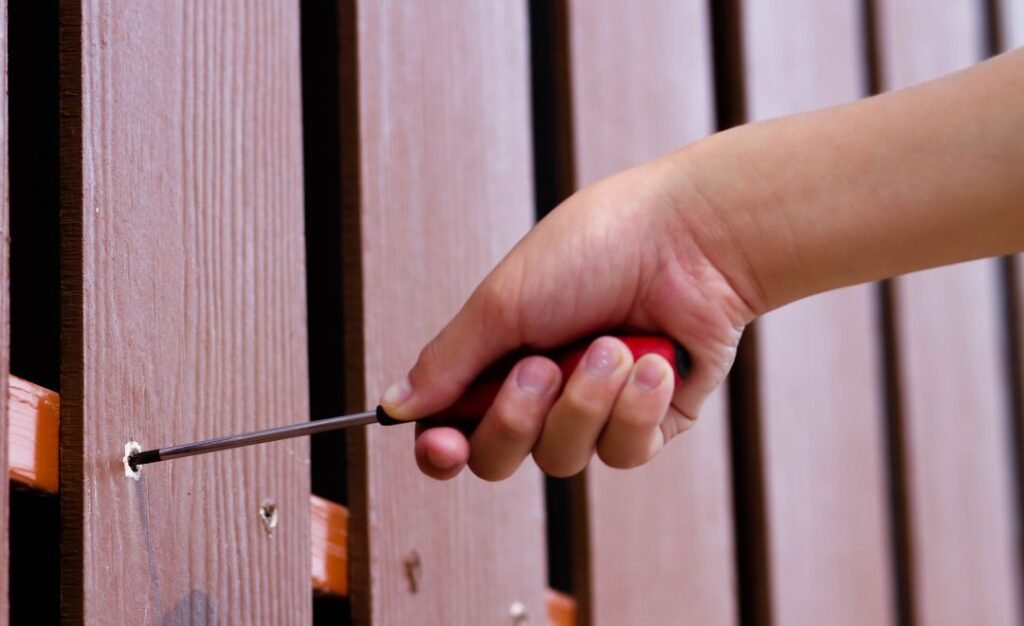
Conclusion
Understanding the top 10 screws and their uses will help you succeed in all your DIY projects. Whether you’re an experienced pro or a weekend warrior, knowing which screw to use and when will make your tasks easier and your results more durable. So, the next time you pick up a screwdriver, you’ll know exactly what’s needed to get the job done right !
FAQs
1. Can I use wood screws for metal projects?
No, wood screws are not ideal for metal projects as they are designed to grip into wood, not metal. For metal projects, it’s better to use sheet metal screws or machine screws, which are specifically engineered for that purpose.
2. What’s the difference between self-tapping screws and self-drilling screws?
Self-tapping screws create their own threads in materials such as plastic or metal, while self-drilling screws come with a built-in drill bit that can make a hole and create threads simultaneously. Both types eliminate the need for pre-drilling, but self-drilling screws are generally more effective for harder materials.
3. How do I know what length screw to use?
The length of the screw should be long enough to penetrate the material you’re fastening and provide a strong hold. For optimal results, ensure the screw is long enough to go through both materials but not so long that it splits or damages the surface.
4. Are deck screws suitable for indoor use?
Deck screws are mainly designed for outdoor use due to their corrosion-resistant coating. While they can be utilized indoors, they might be excessive for most indoor projects. For indoor applications, standard wood screws or drywall screws are generally sufficient.
5. Can Robertson screws be used with a regular screwdriver?
Robertson screws require a square drive bit, which is different from the standard Phillips or flathead bits. If you have a Robertson bit for your screwdriver, you can use them effectively. However, standard screwdrivers won’t work with Robertson screws.

